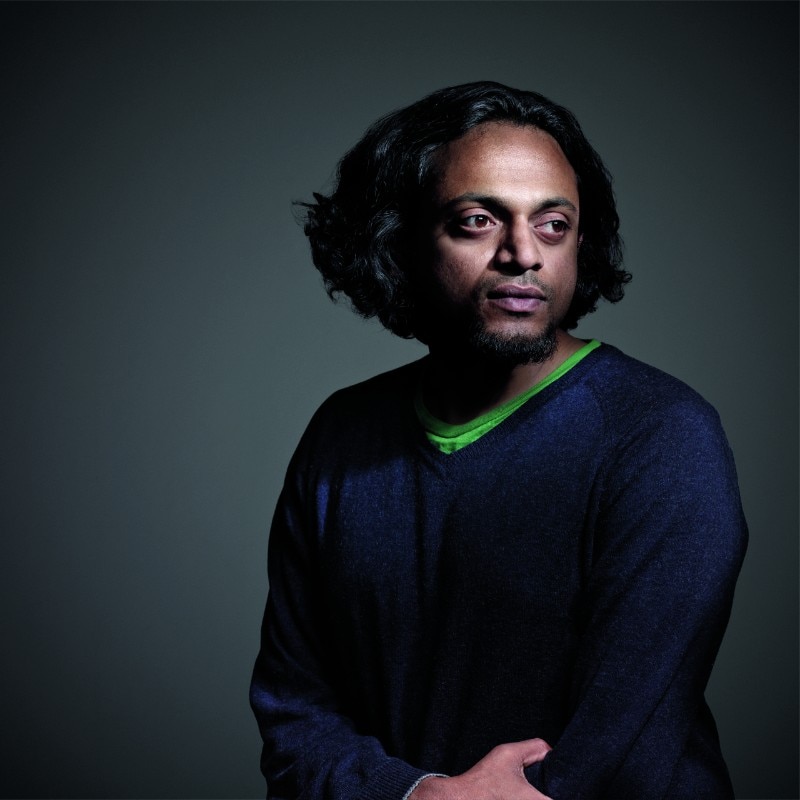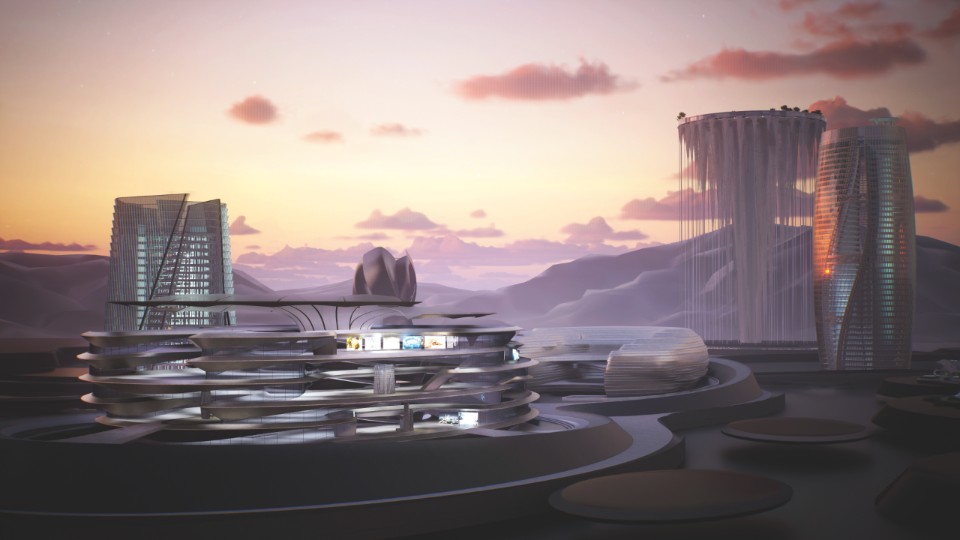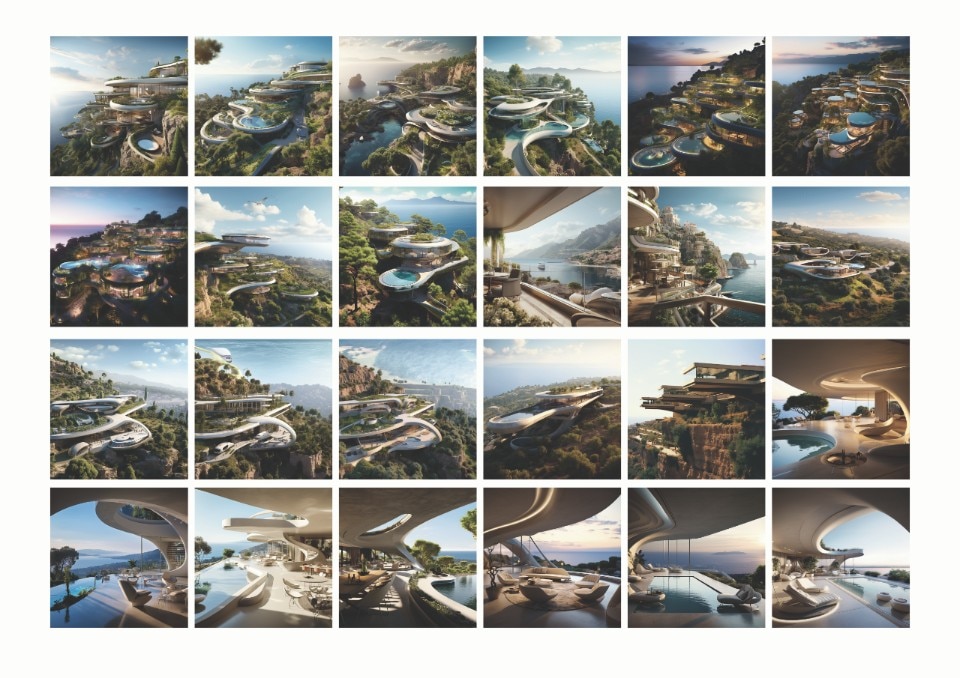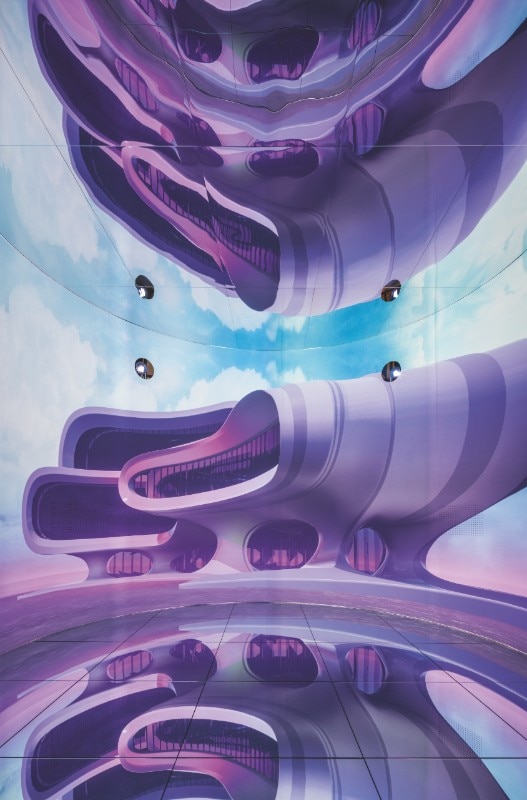“Zaha Hadid Architects was born digital; it didn’t become digital along the way.” Shajay Bhooshan, Zaha Hadid Architects’ Associate Director and co-founder of ZHACODE, ZHA’s Computation and Design research group, explains to DomusAir how new technologies dialogue with architecture and design.
Mattia Schieppati: First of all, could you elaborate on what it means for designers today to “be digital” ?
Shajay Bhooshan: I believe Zaha Hadid Architects is digitally native. What this means is that all our design processes are digital and computational augmented – from ideation to physical realization. This is contrast to the use of computers to digitize manually ideated concepts. The conception of our high performance, user-engaging designs and its physical manufacturing and construction would not be feasible without the augmentation of the human designer and fabricators with digital tools and machines. Interestingly being digitally native, also means to be aligned with pre-computer design processes and wisdoms like those of pioneers like Frei Otto, Antoni Gaudí and Mark Burry, Gothic and Renaissance builders, traditional and vernacular architectures of the world etc. This is because those architectures are inherently rules-based and compatible with computer augmentation and upgradation.

At the heart of this technological Dna is ZHACODE: what is it and what does it do?
ZHACODE is the Computation and Design group of Zaha Hadid Architects, founded in 2007 by Patrik Schumacher, Nils Fischer and Shajay Bhooshan. We at ZHACODE seek a co-evolution of research and practice. We apply project-independent disciplinary knowledge to project-based opportunities, constraints and problems. Our research is based on an interest and expertise in Architectural Geometry, and spans computer graphics, video games, and the modern disciplines of computational design, robotic fabrication and manufacturing and participatory, co-design platforms. Our project contributions spans early-design to design development stages across variety of building types – institutional to residential. We develop and maintain extensive computer codebases to assimilate our research and to support our project contributions.
With the growing integration of technologies like artificial intelligence and machine learning across various industries, what are the current and emerging technologies that you find most intriguing and innovative in the field of design?
As with other technologies, to explore the possibilities offered by AI/ ML technologies to the field of design we undertook a experimental, blue-sky exploration with Refik Anadol Studio. The collaboration was titled Architecting the Metaverse and was exhibited at the Seoul DDP museum as part of a ZHA show, in 2022. The collaboration explored the possibilities of custom training and refinement of DALL-E 2 text-to-image generation with privately held ZHA image archive. The so-called Large Language Model (LLM) and Generative Pre-trained Transformer (GPT) technologies powering DALL-E 2 and ChatGPT etc was not publically available at the time. As part of the collaboration, we asked two important questions: what problems or opportunities can/should AI address in the field of design, and what can we as designers do, aid the development of AI to solve those problems or address those opportunities better.

Generative AI content will be very compatible with and ought to target its use for both online open-world building (Metaverse) and physical city building.
The collaboration highlighted some aspects of AI technologies that we are now building on at ZHA, to be able to augment and accelerate our human-designer centered innovative practice:
• Current AI technologies like LLM technologies need to be connected to the internet, both for the vast sources of data they need to learn from and the vast number of user-refinements that update / refine them. Furthermore, they ought to be targeted at content-creation for which there is a large demand similar to the need/demand for AI-generated images, text, sound, and video in social media and on the internet. As such, in the field of architecture and design, generative AI content will be very compatible with and ought to target its use in both the online open-world building (Metaverse) and physical city building.
• Custom training and refinement on top of a pre-trained base AI model is important to be able to create novel outcomes. As such, a well-structured database and repository of assets will be a key requirement for proprietary application and to generate unique outcomes.
• AI-generated content, particularly easy-to-use text-to-image technologies can accelerate the design ideation and optioneering phase of projects, without the need for laborious creation of 3D models, visualization, mood-boards etc. These technologies can also enable wider participation non-expert stakeholders including the client, and non-computational staff of design teams. This is a significant benefit towards delivering value to the client – both public and private
• Expert/Human interpretation of the AI generated results as 3D architectural spaces and scenes will remain a key ingredient in steering the AI towards meaningful and useful results. In parallel, we are exploring other forms of AI, such as reinforcement learning that do not rely on large quantities of data to learn from, and are compatible to our research and conception of certain architectural tasks as architectural games.
The design industry has significantly shifted towards prioritizing sustainability, particularly environmental sustainability. How can AI assist in advancing this shift and in what ways might AI contribute to designing for a more sustainable world?
In the field of architecture and urbanism, one of the most impactful topic to address sustainability is to address the need for rapid but dense urbanization in the next 25 years. We need cities and we need them to grow compactly, responsibly, and consensually as 2.5 Billion more of us will call them home by 2050. This is in contrast to the car-centered, built-at-once, coercive, low-density sprawl that plagued all 20th century cities in North America and Europe - a socially and environmentally detrimental model that is now widely in use in India, Africa and other urban growth centers.

Integrated digital design and construction is critical to counter the waste, and adaptively grow thriving circular economies. It enables technological extension of traditional building wisdoms, design for disassembly and next use, material banks and exchanges, etc. They could make possible an effective use of material, energy and financial resources to create engaging spaces and districts. In the last two decades, there has been significant progress in the field of Architectural and Structural Geometry, robotic fabrication and industrialized construction etc. Much of this progress and knowledge is now available in the form of digital tools, codebases, research papers etc. AI could help new designers explore and apply this knowledge more easily and rapidly. In summary, we see AI as designer-augmentation technologies that deliver the most value in co-pilot mode as opposed to automation mode. So, AI can both augment the existing training of the architect in Architectural Geometry and its application for sustainable and circular design of buildings and cities, and also help in training new architects more rapidly in advances that have been made the field of computational design.
As technology becomes more important in design, leading to new professions that mix different fields, how do you view this trend of blending design, art, and other areas, especially in your work with ZHACODE projects?
All (design) technologies need blue-sky, collaborative exploration before exploiting some of the discoveries towards addressing urgent needs, opportunities and problems of societies. Architects must participate in these exercises, cannot afford to sit on the sidelines, and wait for the technologies to be steered towards our profession. The bi-directional link between research hand practice is rewarding, engaging, scientifically compatible, intellectually stimulating, and artistically enabling. Design-research allows our profession to pro-actively and optimistically address the greatest challenges of facing 21st century architecture and urbanism.
Opening image: Architecting the Metaverse is an immersive art project at the intersection od architecture, art, technology and AI, exhibited at Seoul DDP museum in 2022. It’s the result of a 6-month collaboration between Refik Anadol Studio and Zaha Hadid Architects. Courtesy Zaha Hadid Architects


